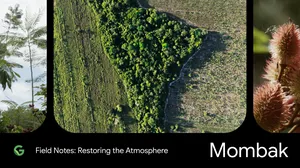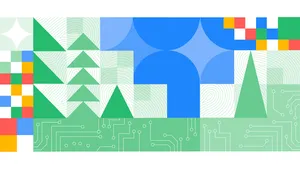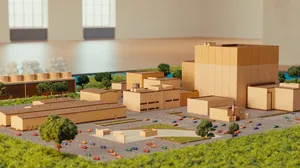A circular Google in a sustainable world

A circular Google and how we plan to get there
People love stuff. During the 20th Century, the use of raw materials rose globally at twice the rate as the population. All of this consumption puts a strain on resources. In fact, just last year, humanity’s consumption of resources--such as metals, timber and even land--required 1.7 planet Earths to sustain. So, is all this demand for ‘stuff’ inherently unsustainable, or is the problem with how we take, make and waste it?
The sheer scale of our resource economy is almost unimaginable: Billions of tons of materials, from plastic straws and blocks of concrete to bales of wheat and sheets of metal, all of these things are constantly being taken, made, moved around, built with, used up, and disposed of, all across the world. For too long, the damaging environmental consequences of these linear systems remained relatively invisible. Today, however, the impact cannot be ignored. One garbage truck of plastic is dumped into our oceans every minute, landfills are overflowing, and our climate crisis is fueled by energy used to sustain this take-make-waste model.
The ‘circular economy’ concept challenges this disconnect between consumption and consequences. In a circular economy abundance become possible, livelihoods raised and progress fueled, all by keeping stuff, circular.
Our vision is simple: we want a circular Google within a sustainable world.
The challenges to making this vision a reality are as daunting as they are exciting. It demands that we redefine how systems work—from what we value and the choices we make, to the assumptions and industrial processes that have been standard practice across our economy for decades. Our new circular Google strategy is part of our wider effort to build sustainability into everything we do.
As we built out this strategy, an intriguing insight emerged. An element of reaching a fully circular economy requires identifying, tracking and managing the overwhelming and globe-spanning swirl of materials. Thankfully, technological developments in the 21st century suggest a way to do so: to view all this stuff as information.
Considering the circular economy as an information challenge is inspiring for us at Google. It suggests that we can leverage our scale, resources and technological expertise to help the world meet resource needs.
It’s been estimated that transitioning to a circular economy could generate $4.5 trillion in new economic output by 2030. That fact illustrates the potential to achieve abundance and make progress, while also significantly improving human and environmental systems.
So we are excited to announce a new goal: Maximize the reuse of finite resources across our operations, products and supply chains and enable others to do the same. But we can’t do it alone. A truly systemic shift to a circular economy goes way beyond Google. We’ll need to create new, and even unlikely, partnerships across industries. The scale of the change required to reach circularity will touch every part of society and span the entire global economy.
If you are a Google team member, partner, supplier or one of the billions of people who use Google every day, we hope you will come on this exciting journey with us.







